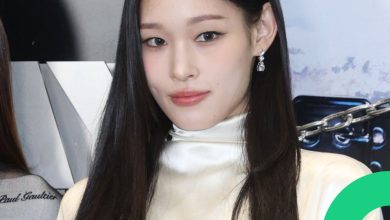Unveiling Bong Joon-ho’s ‘Mickey 17’: What to Expect, and the Key Focus on Its Ending

On January 20, a footage screening partially revealed Bong Joon-ho’s highly anticipated new film, “Mickey 17.” This marks the director’s first project in six years since “Parasite” (2019). Based on the novel “Mickey 7” by American author Ashton Edward, the film delves into a futuristic narrative with a strong philosophical undertone.
Table of contents
A Unique Take on the Expendable Human
The 20-minute preview primarily showcased the origin story of Mickey, an “Expendable” who undertakes dangerous tasks in place of others. In the film, “Expendables” refer to disposable humans created to handle perilous missions on extraterrestrial planets. A unique feature of these beings is their ability to regenerate instantly upon death, with memories preserved and uploaded into a new body—what Bong Joon-ho describes as “human printing.” However, a critical rule governs their existence: only one version of an Expendable can exist at a time. The film’s main conflict arises when this rule is broken.
While the preview suggests that Bong Joon-ho closely follows the novel’s structure, he adds his signature twists. One notable change is Mickey’s backstory. In the original novel, Mickey is a historian, but in the film, he is a failed small business owner who once ran a macaron shop with his friend Berto (played by Steven Yeun). This version of Mickey has endured death 17 times, far more than in the book, having volunteered to become an Expendable to escape debt collectors.

Social Commentary Through a Sci-Fi Lens
The shift in Mickey’s background reflects Bong Joon-ho’s intent to portray a more relatable, working-class protagonist. This aligns with the broader themes the director is known for: critiques of social hierarchy, capitalism, and the devaluation of human life.
In one scene from the preview, Mickey is tasked with measuring radiation levels, enduring gruesome injuries as his skin melts and his hand is severed. Despite his visible suffering, his superiors demand he push further for results, reflecting an unyielding focus on objectives over humanity.
Bong Joon-ho balances this dark commentary with his trademark mix of comedy and satire. While he insists “Mickey 17” is not overtly political, he acknowledges that the film contains layers of sociopolitical critique, much like his previous works.
Creatures and an All-Star Cast
Interestingly, the film introduces a new genre element: creatures. While the novel features little detail about the alien life forms, Bong Joon-ho’s imagination brings them vividly to life as massive, ash-colored entities with indistinct features. This element recalls the monstrous figures in his earlier films, “The Host” and “Okja.”
Leading the narrative, Robert Pattinson delivers a compelling performance as Mickey. Known to Korean audiences for his role in “The Batman,” Robert Pattinson captures the essence of an ordinary, reluctant hero caught in extraordinary circumstances—evoking roles typically played by Song Kang-ho in Bong Joon-ho’s Korean films. Meanwhile, Mark Ruffalo, in his first villainous role, adds intrigue as a calculating politician.

The ultimate highlight of “Mickey 17” is expected to be its ending. Unlike Bong Joon-ho’s previous films, which often conclude on a somber note, the original novel ends with hope. “Mickey 7” decides to stop uploading his consciousness and embrace life as a human. If retained, this uplifting resolution could mark a surprising departure for Bong Joon-ho, serving as the film’s most pivotal twist.
The full version of “Mickey 17” will debut at the 75th Berlin International Film Festival on February 17. Its official release dates are February 28 in South Korea and March 7 in North America, with respective age ratings of 15+ and R.
